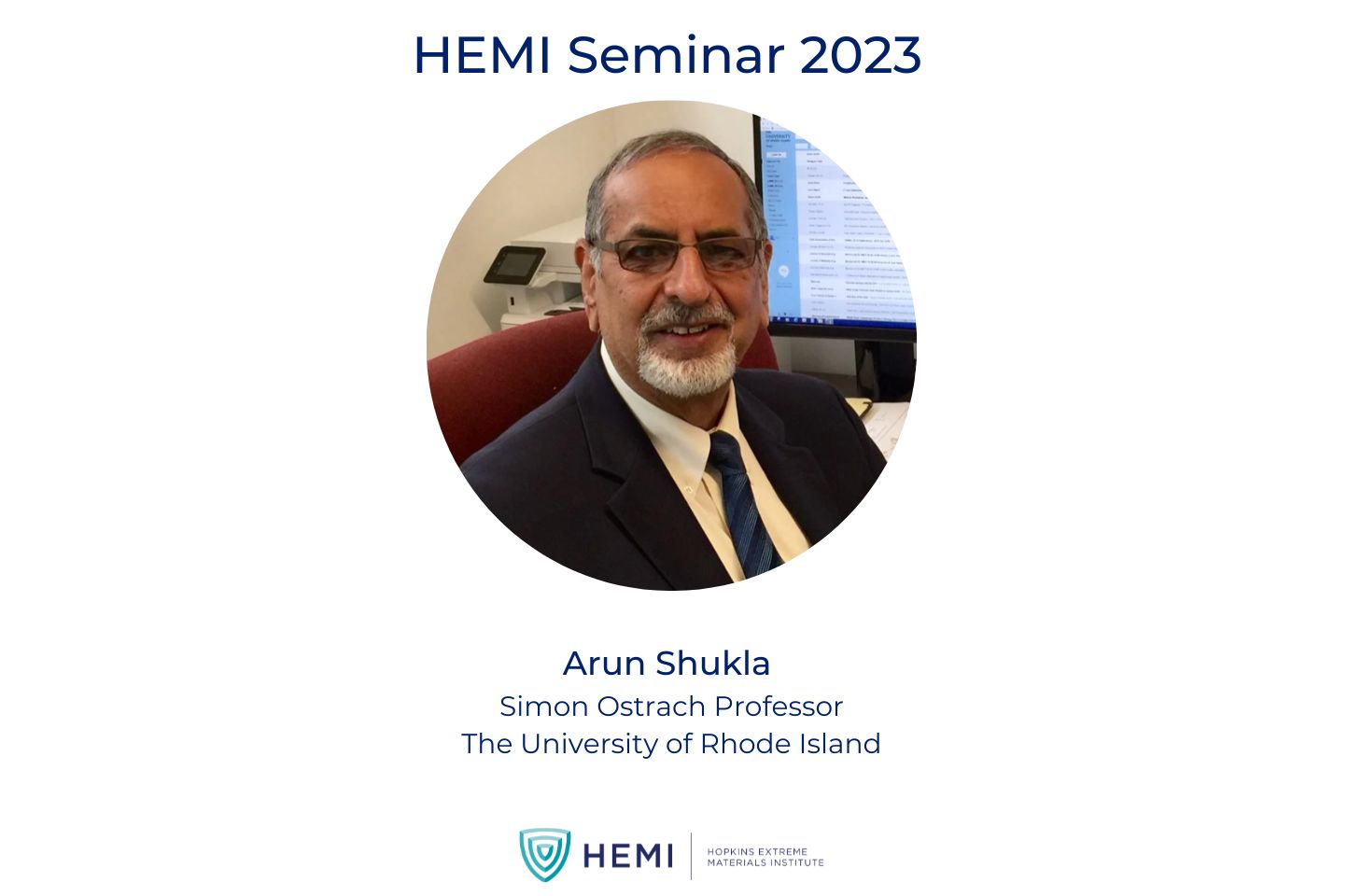February 3, 2023 @ 11:00 am - 12:00 pm

Location: Malone 127
Title: Structural Response Under Extreme Underwater Loadings
Abstract: A brief introduction on the National Institute for Undersea Vehicle Technology will be given. The seminar will present results on the mechanics of underwater implosion of single hull and double hull structures. Experiments are also performed to investigate sympathetic implosions and interaction of an imploding cylinder with a nearby structure. State of the art pressure vessel facilities are used to study the implosion process. These pressure vessels are outfitted with several windows to allow the use of the 3D Digital Image Correlation (DIC) technique. The pressure histories generated by the implosion event are captured from dynamic pressure transducers mounted close to the specimen in all the experiments. These pressure histories are then related to real time deformations and velocities occurring on the shells. High speed images coupled with 3D-DIC technique are captured for better understanding of the deformation mechanisms and collapse modes of the structures during the experiments. The second part of the talk will focus on experimental investigations to study the fluid-to-structure interaction between the gas bubble generated by an underwater explosion (UNDEX) and a nearby rigid and a flexible plate. Experiments are performed by clamping plates to a support structure that is either air backed, or water backed. Though the shockwave produced by the initial detonation of an explosive can be a great source of damage during an UNDEX event, the resulting gas bubble’s collapse can be an even greater source of damage. Results show that the explosive standoff distance, plate rigidity, and hydrostatic pressure can greatly change the bubble’s shape, size, migration speed, migration direction, jetting behavior, and damage to the nearby plate. The UNDEX bubble’s collapse and concurrent bubble jetting are shown to be the primary causes of plate damage, including rupture, for the dimensionless standoff parameters studied.
Biography: Dr. Shukla was elected to the Russian Academy of Engineering in 2015 and the European Academy of Sciences and Arts in 2011. He is a Fellow of the American Society of Mechanical Engineers, American Academy of Mechanics, Society for Experimental Mechanics (SEM) and the Society for Shock Wave, India. He has received the Murray, Taylor, Frocht, Lazan and Tatnall Awards from SEM. In 2003 he served as the President of SEM. He was the Technical Editor of the international journal Experimental Mechanics and currently serves on the Editorial Boards of key engineering journals. Dr. Shukla served on the National Research Council on the United States National Committee on Theoretical and Applied Mechanics for eight years. Recently, he also served as the member and Chair of the Executive Committee of the Applied Mechanics Division of ASME. Dr. Shukla has received the Distinguished Alumnus Award from his alma mater, IIT Kanpur. In 2011, he served as the Clark B. Millikan Visiting Professor at Caltech and in 2019 as the Satish Dhawan Visiting Professor at IISc Bangalore. Along with his many Ph.D. and M.S. students, he has published more than 450 papers in refereed journals and proceedings. Dr. Shukla has authored and edited 10 books and has delivered numerous plenary and keynote lectures.




